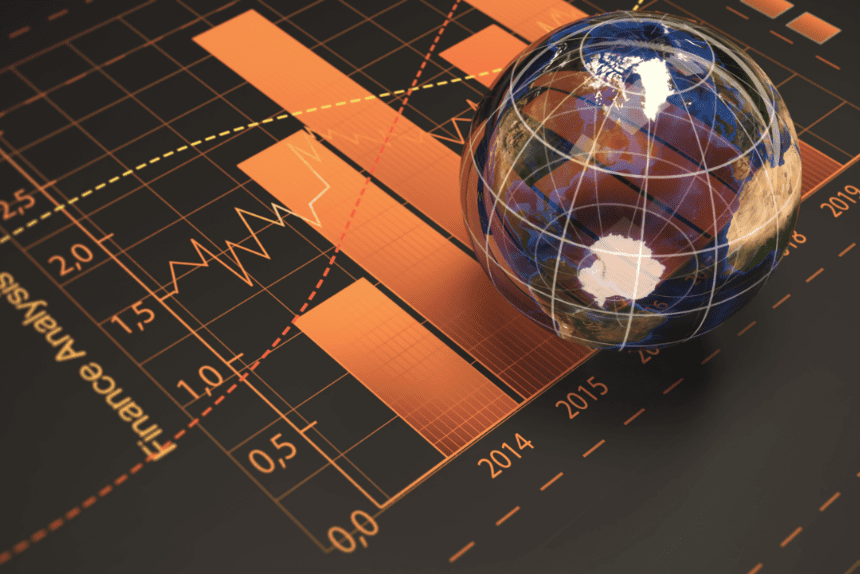Donald Trump, the President of the United States, recently said that he will impose secondary tariffs on countries that trade with Russia. This has sent shockwaves across the world economy. If Russia and Ukraine don’t strike a ceasefire agreement by August 8, 2025, these tariffs will go into force. They might have a big influence on trade around the world. Countries that buy a lot of Russian oil and gas, like India, China, and Turkey, are increasingly feeling the effects of U.S. pressure.
- What are secondary tariffs, and why are they being put in place?
- What will happen to countries that buy Russian energy if there are secondary tariffs?
- Could secondary tariffs make energy prices go up around the world?
- How Will This Affect Relations Between the U.S. and India?
- How Will Secondary Tariffs Impact China and Other Major Economies?
- What Will Happen to Trade in the EU?
- Final thoughts on secondary tariffs and trade around the world
Trump’s choice to impose secondary tariffs is a big step forward in his trade policies and could change the way the world does business, the energy markets, and international relations. In this post, we’ll look at the wide-ranging effects of secondary tariffs and how they might affect economies around the world.
What are secondary tariffs, and why are they being put in place?
Secondary tariffs are levies on commodities that come into a country from another country that does business with which that country. In this situation, Russia. The U.S. government wants to lower the amount of money Russia makes from selling electricity, which is important for paying for its military activities in Ukraine. President Trump wants to pressure Moscow to stop fighting and agree to a truce by imposing taxes on countries that are still buying Russian energy.
These tariffs would affect all items coming from nations that deal with Russia, and they may raise import levies by as high as 100%. Because Russia is such a big producer of energy, secondary tariffs might have a big effect on energy prices around the world and on relations between countries. Here is the link to our article on Tariff Changes Announced.
What will happen to countries that buy Russian energy if there are secondary tariffs?
India, China, and Turkey are all countries that depend on Russian oil and gas a lot. These secondary tariffs could mess up their energy supply chains. The U.S. has put a 25% tax on Indian imports of Russian oil, which has had direct effects on India. If the duties go into effect, U.S. businesses that buy goods from these nations could have to pay twice as much in taxes, which would raise costs for customers.
The goal is to raise the price of Russian oil and gas so much that even countries that rely on them now may have to look for other sources. This might hurt Russia’s finances, making it harder for the country to pay for the war in Ukraine. But the situation is more complicated because Russia can get around sanctions in other ways, like by utilizing a “shadow fleet” to hide where its energy shipments come from.
Could secondary tariffs make energy prices go up around the world?
One of the main worries regarding secondary tariffs is that they could make energy costs go up around the world. If tariffs work to lower Russia’s energy exports, the amount of oil and gas available on the world market could go down, which would cause prices to go higher. This would be like the inflationary pressures that happened when Russia invaded Ukraine in 2022. Experts say that even if U.S. oil output has reached historic highs, the global market could still be influenced.
According to Kieran Tompkins of Capital Economics, OPEC+ countries, which include Saudi Arabia and other oil-producing countries, may have enough extra capacity to keep prices stable. But it’s still unclear what these secondary tariffs will do to energy prices in the long run, and they could cause inflationary pressures around the world. Here is the link to our article on Tariff Threat Looms.
How Will This Affect Relations Between the U.S. and India?
Because India buys oil from Russia, it is the first country to suffer punitive tariffs from the U.S. If these extra tariffs go up, the relationship between the U.S. and India could get worse. India needs oil from Russia to meet its energy needs, and the government has said it is worried about the tariffs because the U.S. still buys raw goods from Russia, such as nuclear fuel and fertilizers.
If U.S. tariffs on Indian goods go up to 100%, common items, especially cell phones, which are often made in India, may cost more for U.S. consumers. For example, Apple makes a lot of its iPhones in India for the U.S. market. If these tariffs were put in place, it would probably make these goods more expensive, which would hurt American shoppers.
How Will Secondary Tariffs Impact China and Other Major Economies?
China is also a big user of Russian oil, and it would be harder to put secondary duties on Chinese goods because the U.S.-China trade relationship is so big. The U.S. buys a lot more from China than it does from India, and the tariffs might hurt the markets for electronics, toys, and clothes, among other things. This would make the trade relationship between the U.S. and China even more shaky, which might lead to inflation in the U.S. economy.
Also, putting secondary taxes on Chinese goods could hurt trade talks between the U.S. and China as a whole. Commerce experts say that rising tensions might cause commerce to stop, which would cost jobs and put more pressure on prices in both countries.
What Will Happen to Trade in the EU?
The EU has already been affected by the disruption of Russian energy shipments, and secondary tariffs might make things even worse. The EU has cut back on the amount of energy it gets from Russia a lot since 2022, but it still needs Russian energy for some industrial operations. Secondary tariffs might make it harder for items to go from the EU to the U.S., especially medicines and machinery, which would raise prices for American consumers.
The trade between the U.S. and the EU is the biggest in the world. More tariffs could hurt recent trade deals, which could hurt firms and consumers on both sides. Also, the EU is still moving away from Russian energy, so it is unlikely to change its current policy easily, which makes things even more complicated.
Final thoughts on secondary tariffs and trade around the world
Secondary tariffs are a big step forward in the U.S.’s efforts to limit Russia’s financial power during the ongoing war in Ukraine. The tariffs are meant to lower Russia’s income from energy exports, but they might have big effects on commerce and energy costs around the world. The possible economic effects, notably on countries like India, China, and the EU, could spread to the rest of the world, causing prices to go up and supply chains to be disrupted. It’s still unclear how effective secondary tariffs will be in bringing about a truce, but it’s evident that they are already having an effect on global trade.








